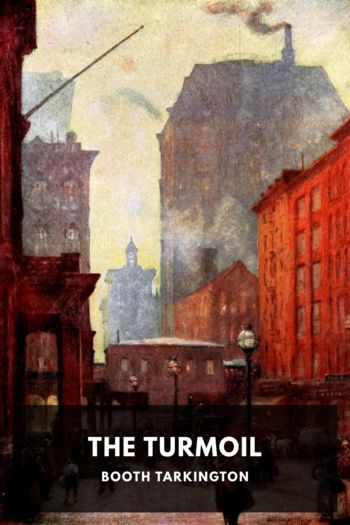Malaysian Maverick: Mahathir Mohamad in Turbulent Times, Barry Wain [best mystery novels of all time .txt] 📗

- Author: Barry Wain
Book online «Malaysian Maverick: Mahathir Mohamad in Turbulent Times, Barry Wain [best mystery novels of all time .txt] 📗». Author Barry Wain
Having cut public spending and borrowing as part of an austerity regime, Dr. Mahathir framed privatization largely in terms of the financial squeeze: Since the government could not foot the bill for the infrastructure the country needed, the task was being assigned to the private sector. Yet he almost certainly would have turned to privatization anyway. As he recorded in The Malay Dilemma, Dr. Mahathir believed strongly in the ability of profit-motivated private companies to deliver the goods. In the 1960s, he had persuaded the Alor Star Town Council to partially privatize night-soil collection to overcome the problem of recalcitrant workers, who showed their displeasure with houses and shops that did not give them a tip by spilling and scattering waste.[56]
Privatization was a crucial element in Dr. Mahathir's vision to mould Malaysia into a nation of innovative entrepreneurs and skilled, disciplined workers. He would sponsor the nascent Malay business class, which in time could take its place alongside successful, non-Malays and be internationally competitive. Privatized ventures had to meet the NEP target of at least 30 per cent bumiputra equity and employment participation. The close connection between privatization and affirmative action goals made Malaysian privatization unique.[57]
Privatization Malaysian-style was as much a political as an economic exercise. Characterized by Lim Kit Siang, the opposition leader, as "piratization", it usually operated on a first-come, first-served basis, without any open bidding. A company that submitted a proposal ahead of rivals got the contract, as long as it had the right connections: an inside track to the UMNO leadership. The winners were almost all well-connected and influential businessmen, or relatives of politicians.
In 1984, a year after it was introduced, privatization received a huge boost when Dr. Mahathir recruited Daim Zainuddin directly from the private sector to replace Tengku Razaleigh as finance minister and UMNO treasurer. Under Daim, the scope of privatization broadened and the pace quickened, especially as Malaysia's economic recession deepened into crisis in 1985-86. While Dr. Mahathir defined privatization as simply the opposite of nationalization and thought in terms of "just a few" projects, Daim "identified so many it went beyond my expectation," the prime minister said.[58] Privatization covered everything from the complete or partial sale of state concerns, the lease of government property, joint ventures such as Proton, management buy-outs, private financing of construction projects, contracting out public services, and allowing outside competition in fields previously restricted to the state.
Nearly 500 enterprises and services were injected with private capital or management over the next 22 years.[59] They included ports, utilities and highways, and some of the generally poorly performing state-owned enterprises formed mostly in the 15 years since the introduction of the NEP. Select government departments were corporatized and listed on the stock exchange, such as Tenaga Nasional Bhd., the power company, and Telekom Malaysia Bhd., the telecommunications utility. Both remained majority state-owned, and the government held a "golden share" that allowed it to veto company decisions deemed to be against the national interest. As state governments and municipal authorities joined the trend, dockyards, hotels, garbage disposal, water supply and city bus operations were privatized.
The main beneficiaries of privatization, though denounced as cronies by critics, were fledgling entrepreneurs as far as the government was concerned. They bought official assets at discounted prices, obtained soft credit and enjoyed state-backed guarantees for loans. Dr. Mahathir was happy to defend the creation of corporate empires built through personal contacts with the UMNO elite. He argued that they were more capable of using state patronage resources than the broad mass of bumiputras. They also performed "national service" by undertaking less profitable projects in the country's interest, he said.
While some high-profile non-Malay tycoons benefited from privatization, most lucrative contracts were directed at Malay businessmen associated with one of Malaysia's three top political leaders: Dr. Mahathir, Daim and Anwar Ibrahim, the deputy prime minister who took over from Daim as finance minister in 1991. Each of the politicians seemed to have different aims: Dr. Mahathir thought he had the ability to pick future winners for his globally competitive bumiputra class; Daim used business protégés as proxies for his own commercial interests, with most of them sitting on the boards of his family companies; Anwar, by contrast, created a group of business associates to develop a political base in UMNO.[60]
The most successful were "Daim's boys", the best and brightest of the young executives he had nurtured at Peremba Bhd., a state-owned commercial property corporation, before joining the government. They became high profile multi-millionaires and enjoyed celebrity status in the late 1980s and 1990s, the best known being Halim Saad of the Renong Group, Tajudin Ramli of Technology Resources Bhd. and Wan Azmi Wan Hamzah of Land and General Bhd. They were the new role models for the Malays, "a position previously filled by political figures, especially those who had fought for the country's independence".[61]
The government declared privatization a resounding success. It said it gained about RM23 billion from the sale of equity and nearly RM13 billion from the sale of assets, and pointed to savings of at least RM122 billion for not having to build infrastructure. New revenue was amassed from lease payments and corporate taxes, and substantial debt was transferred to the private sector. Privatization was also credited with improving efficiency and service, and with trimming the bureaucracy by more than 114,000 employees.[62]
While there was no doubt that privatized entities considerably deepened and broadened Malaysia's stock market and made it the biggest in Southeast Asia, privatization itself remained extremely contentious. That it concentrated wealth and opportunity in a privileged handful of Malays at the expense of the vast majority was a sore point. Public monopolies sometimes became private monopolies with a noticeable deterioration in performance. A hidden cost to taxpayers, potentially devastating, was what economists call contingent liabilities: The government sometimes guaranteed a certain





Comments (0)